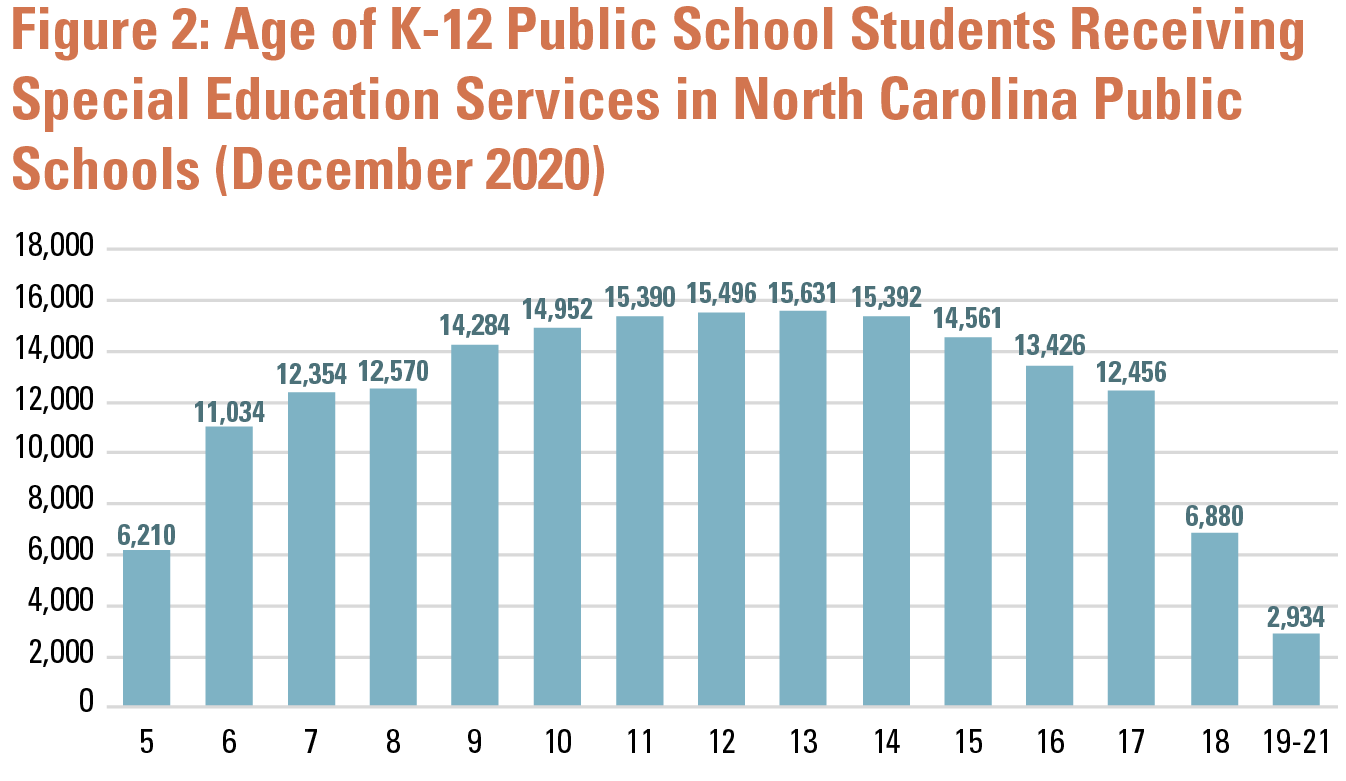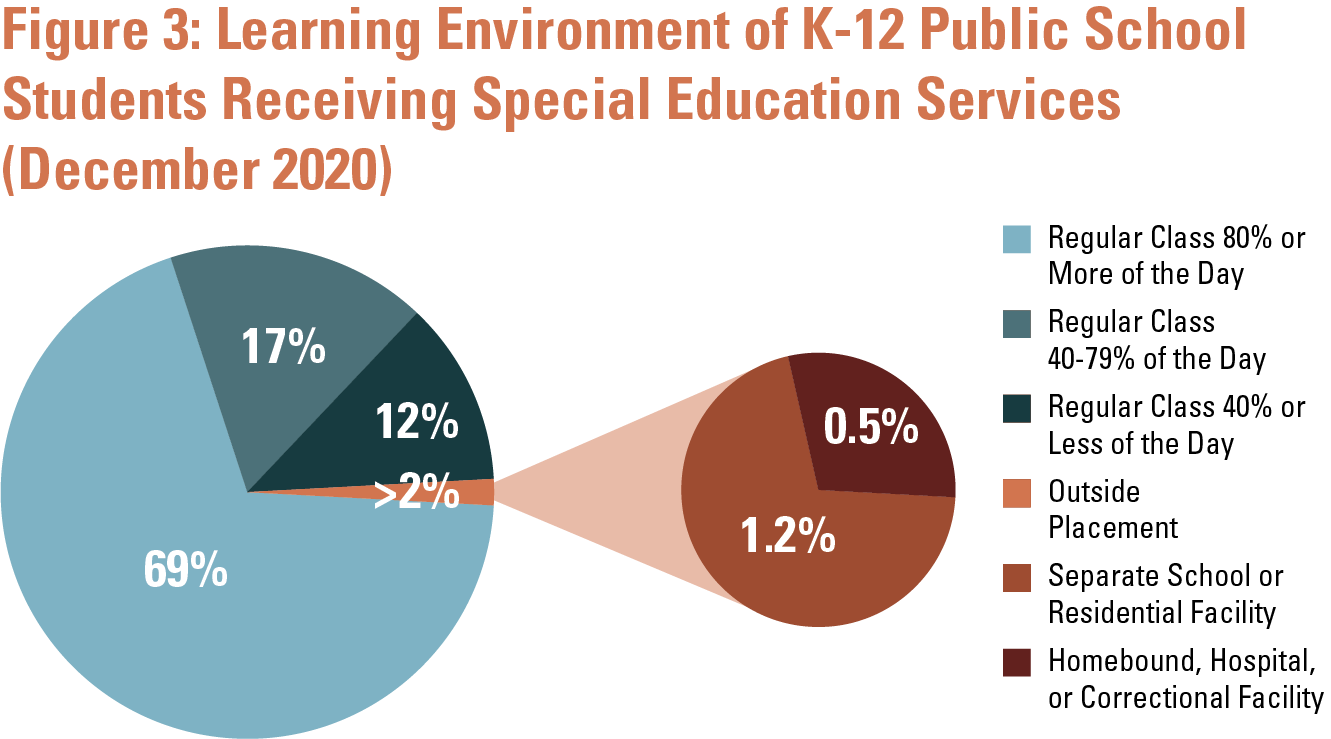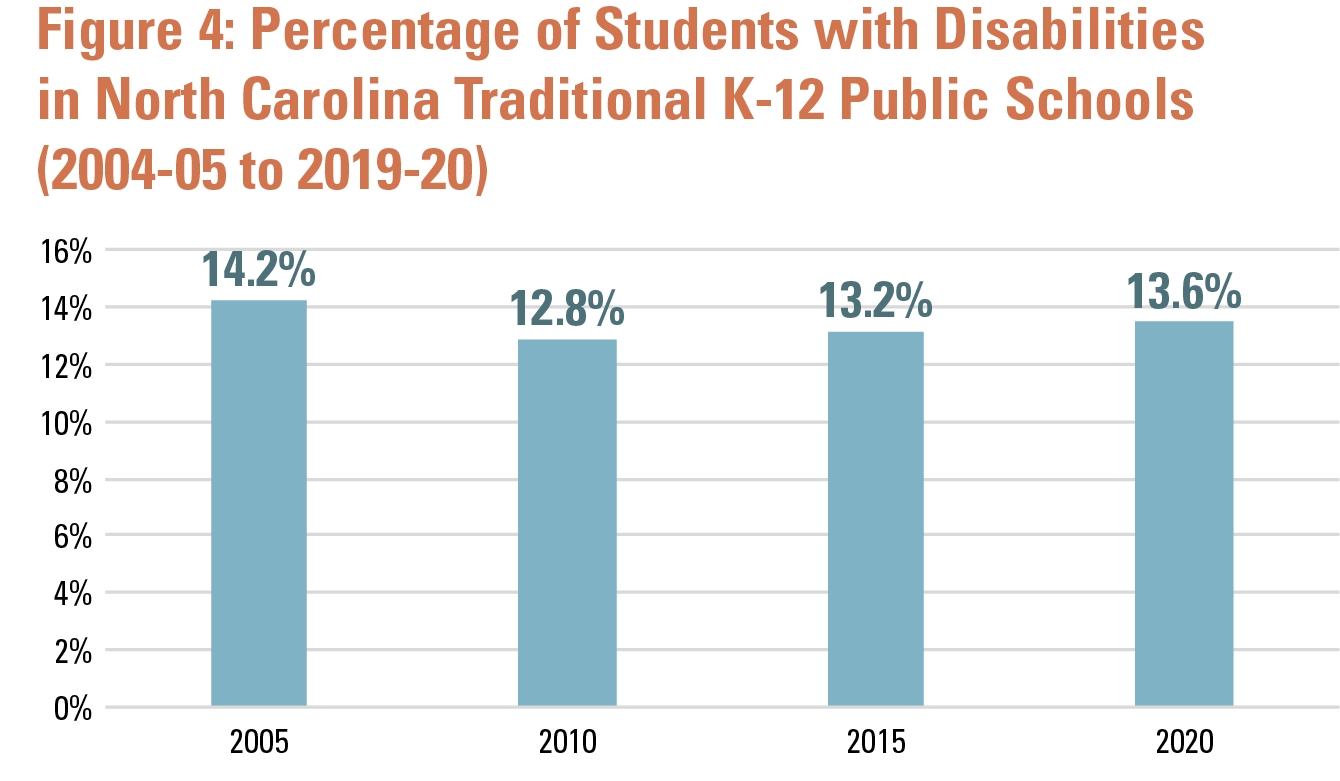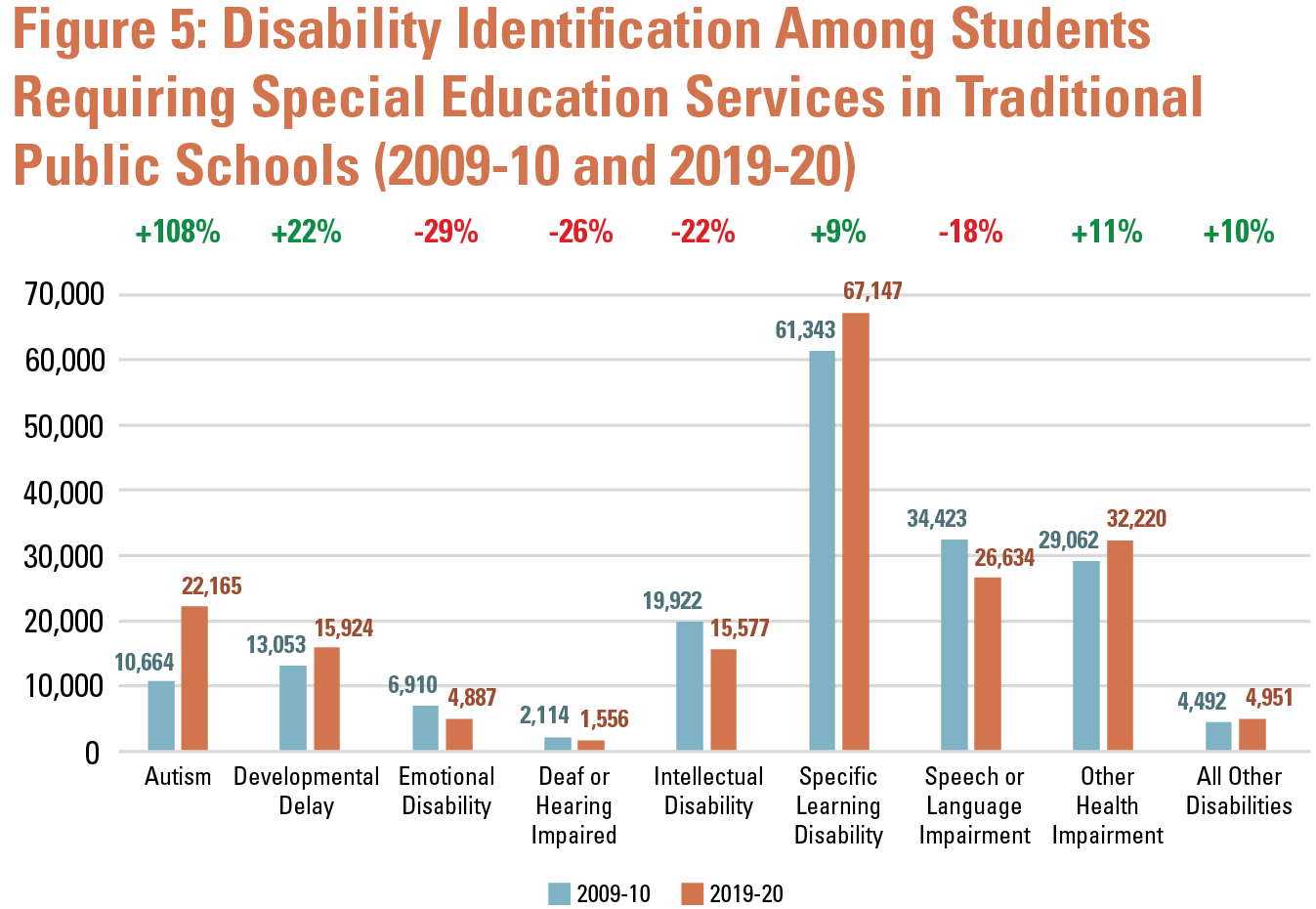2022 Spotlight On Series:
Students with Disabilities in North Carolina
The Individuals with Disabilities Education Act (IDEA) guarantees students with disabilities a free and appropriate public education, guided by an individualized education program developed by educators in partnership with the student’s parent/guardian.
Federal funding for students with disabilities exceeds $350 million annually. The state of North Carolina allocates $4,550 per special education student, for an additional $965 million.
Under North Carolina’s existing policy, funding can be allocated for up to 13% of a school district’s or charter school’s average daily membership. In 2020-21, the percentage of students receiving special education services ranged from 7.6% in Clinton City Schools to 19.8% in Haywood County Schools and Watauga County Schools (see Figure 1 below).
In some cases, state and federal funding do not cover the full cost of providing special education services for each child. This occurs most often with students who have severe disabilities, as their necessary special education services are more expensive to provide. In order to remedy this problem, a 2010 report prepared for the North Carolina General Assembly recommended that state allotments for students with disabilities be organized into three tiers based on the severity of the child’s disability, but the changes have not been enacted.
Students are most often identified as requiring special education services between the ages of 6 and 9 (between first and fourth grade). The population of students receiving special education services peaks during the middle school, before falling slightly in the early years of high school, and more significantly as students approach the end of their high school careers.

One requirement of IDEA is that students receiving special education services be educated in the least restrictive environment for that student, meaning, to the greatest extent possible, students are educated in regular classrooms with peers who do not receive special education services. During the 2020-21 school year, 69% of North Carolina students receiving special education services spent 80% or more of their day in a regular classroom, while less than 2% required an placement outside of a traditional school setting.

The percentage of North Carolina students in K-12 traditional public schools receiving special education services has remained consistent at around 14% from 2005 to 2020 (nationally, 15% of students receive special education services); however, the percentage of students within each disability category has shifted significantly.




